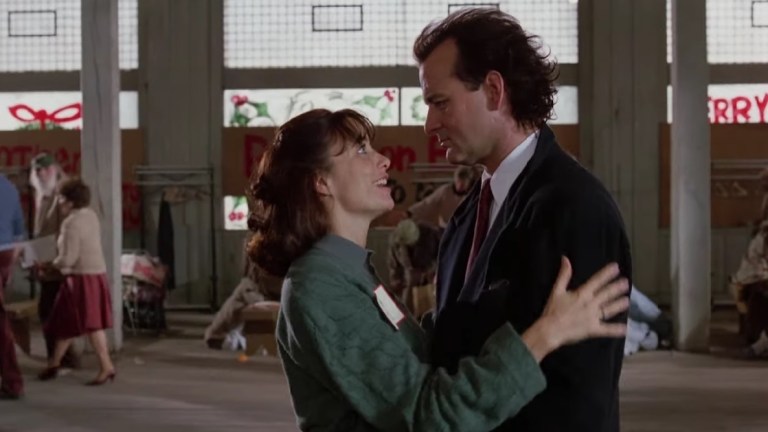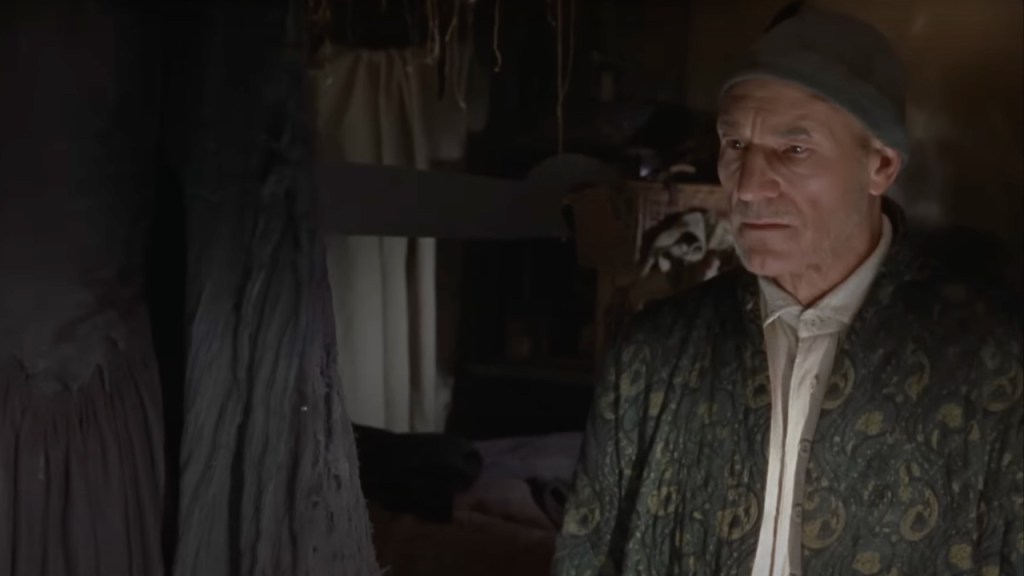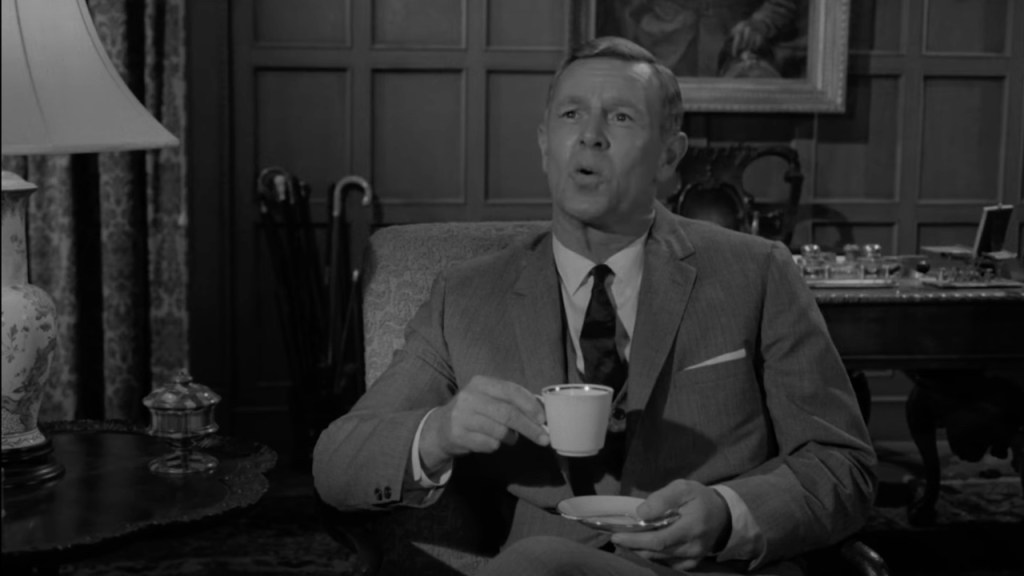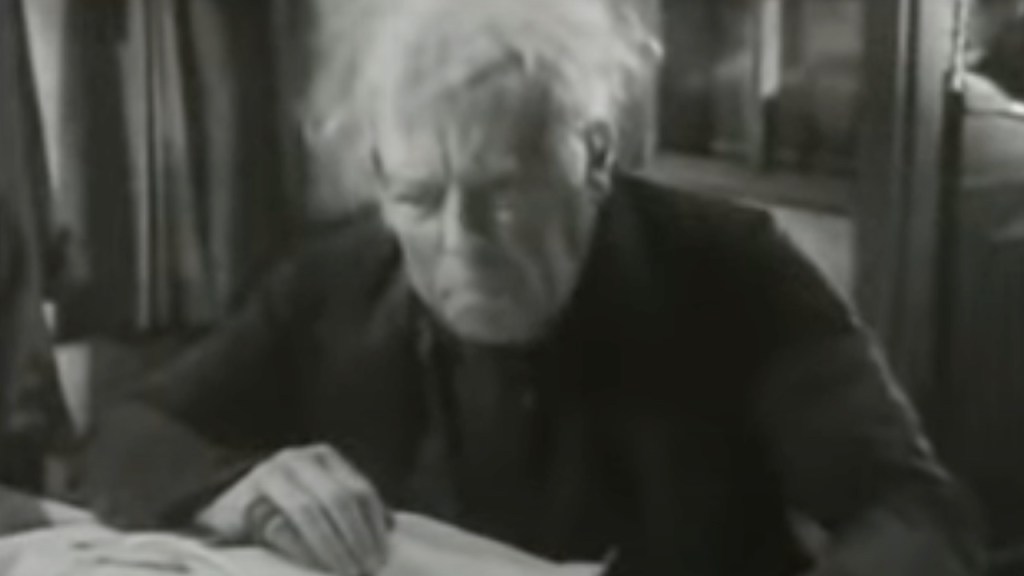Ranking the 10 Best Scrooge Movies
Many actors have tried their hand at playing Ebenezer Scrooge, but these ten movies feature the best take on the miser from Charles Dickens's A Christmas Carol.

In 1843, London publishers Chapman & Hall released A Christmas Carol. Written by Charles Dickens and illustrated by John Leech, it was inspired in part by Dickens’s anger at inequality in his country, especially as it affected children. Despite its aversion to the upper classes, A Christmas Carol was an immediate hit among readers and critics. Given the book’s popularity, it’s no surprise that movie makers have picked up on the story many times. Between its clear redemption arc and ghostly premise, the story has everything that a good movie needs.
Still, not every adaptation of A Christmas Carol is created equal. So if you’re looking for the best of the worst man in film and literature, check out these ten great movies. And if you don’t like my picks, well, bah humbug I say.
10. Scrooged (1988)
On paper, Scrooged sounds like a home run. Bill Murray, in his ’80s glory, plays an updated version of Scrooge in the form of Frank Cross, a cruel tv exec who berates his underlings while putting on a live Christmas Eve broadcast of A Christmas Carol. He gets visited by ghosts played by David Johansen and Carol Kane, and the supporting cast includes Karen Allen, Alfre Woodard, and Bobcat Goldthwait. If that’s not enough, Richard Donner directs a script by Saturday Night Live’s Michael O’Donoghue and Mitch Glazer.
Unfortunately, Scrooged doesn’t quite sell Cross’s transformation. The first two-thirds of the movie workpretty well, as it just asks Murray to deliver deadpan cuts to everyone around him. Even the ghosts have a chip on their shoulders, with Kane’s bubbly Ghost of Christmas Present introducing herself by kicking Cross in the groin, Johansen’s Ghost of Christmas Past cackling in his face, and the Ghost of Christmas Future doing its best Freddy Krueger impression and embedding souls in its rib cage. Heck, even Goldthwait’s grabs a shotgun and chases Frank through the studio.
The end result is a weird and darkly funny movie, but not the best take on Scrooge.
9. Ghosts of Girlfriends Past (2009)
Ghosts of Girlfriends Past opens with Matthew McConaughey walking into a studio filled with lingerie models, flirting with a bunch of them, snapping a couple quick pictures, and moves off like he’s Austin Powers. Even without looking at the date, you can probably guess that Ghosts of Girlfriends Past comes from the pre-McConaissance period, when McConaughey starred in movies with posters that featured him leaning against things and flashing an easy smile.
His character Conner Mead might not be the most compelling take on Scrooge, given that neither director Mark Waters nor screenwriters Jon Lucas and Scott Moore seem that upset about his womanizing, however, the movie does manage to be a clever twist on both the Christmas Carol story and on the rom com genre. McConaughey and co-star Jennifer Garner have chemistry, and the “ghosts” (that is, Mead’s former girlfriends) make for fun setpieces. Even Michael Douglas arrives to chew the scenery as the movie’s Marley, the Robert Evans-esque Uncle Wayne.
8. Scrooge, or Marley’s Ghost (1901)
If I told you that one of the best A Christmas Carol adaptations was a special-effects extravaganza, you probably wouldn’t guess that it was the first one. But the 1901 adaptation Scrooge, or Marley’s Ghost uses wonderful compositing and dissolve effects to tell the story of Scrooge in just over six minutes. When not dabbling in cinema, filmmaker Walter R. Booth made his living as a stage magician. He brought those same techniques and sense of wonder to the screen, which allowed him to create tableaus of Scrooge and Marley (the sole ghostly guide in Booth’s take, written by J. C. Buckstone) that observe the past, present, and future.
Some may raise objections about Scrooge, or Marley’s Ghost ranking this high, given its short run time. However, no one can deny that Booth captures the themes and tones of the story in those few minutes. In particular, Booth gets a lot out of Daniel Smith’s take on Ebenezer Scrooge, which manages to feel believably lived-in, despite its big, theatrical approach.
7. A Christmas Carol (1999)

On one hand, it feels almost too easy to cast Patrick Stewart in the part of Ebenezer Scrooge, given that his iconic Star Trek: The Next Generation character Jean-Luc Picard hates kids, but Stewart still has plenty of opportunity to bloviate and bluster here. Add in Richard E. Grant as Bob Cratchit and Joel Grey as the Ghost of Christmas Past, and you’ve got a stacked cast for a Christmas classic.
Unfortunately, director David Jones, who has had a long career helming Shakespeare productions on stage, cannot make full use of his cast, so the 1999 A Christmas Carol comes off like a good television movie, but a television movie nonetheless.
6. A Carol for Another Christmas (1964)

Few creators believed in the power of television to change the world like Rod Serling, creator of The Twilight Zone. While it sometimes got the best of him, resulting in preachy stories like the episode “The Mighty Casey” or the 1972 movie The Man, no one can fault Serling’s imagination and passion for justice. Serling teams with director Joseph L. Mankiewicz and a cast of ’60s character actors, including Peter Sellers and Eva Marie Saint, to update A Christmas Carol for the Cold War era.
Sterling Hayden stars as Daniel Grudge, a rich American turned isolationist due to the death of his son Marley in an undefined war overseas. After dismissing a plea for peace from his nephew Don (Ben Gazzera), Grudge meets three ghosts — Steve Lawrence, Pat Hingle, and Robert Shaw — who force him to see his relationship to people suffering around the world. Fans of The Twilight Zone will recognize Serling’s style and politics, albeit elevated by Mankiewicz’s audacious (if still stagey) direction and outstanding cast.
5. Scrooge (1970)
“What the dickens have they done to Scrooge?” Granted, this tagline appeared on the poster for Scrooge long before they reimagined Dickens’s miser as a smarmy lingerie photographer or as a Scottish duck, but it does prepare the viewer for an unconventional take on A Christmas Carol. Directed by Ronald Neame and written by composer and lyricist Leslie Bricusse, Scrooge offers a musical version of A Christmas Carol with Albert Finney in the lead role. Packed with a cast of British stage actors, including Alec Guinnes as Marley, the 1970 Scrooge toes the line between classical and (then) modern.
Anyone in the mood for a musical version of the story will be entertained by Scrooge, especially the standout song “Thank You Very Much.” However, those not interested in a big stagey musical will be put off by all of it, starting with Finney’s Scrooge. Finney seems to be playing Scrooge as Popeye the Sailor Man, with squinty eyes and a crooked mouth from which he mutters inaudible lines. Scrooge might be the weirdest faithful version of A Christmas Carol.
4. Muppet Christmas Carol (1992)
Given the flights of imagination invited by the existence of ghosts in A Christmas Carol, it seems surprising that Muppet creator Jim Henson never got around to adapting the work in any form. It was until after Henson’s death that his son Brian began working on an adaptation that became Muppet Christmas Carol, considered by many to be the best Muppet movie following Henson’s death. Muppet Christmas Carol was certainly worth the wait.
Though the film pushes aside the mainline Muppet characters, save for Gonzo in the role of Charles Dickens and Rizzo the Rat as his sidekick, the film feels in line with previous Muppet movies. More importantly, it feels in line with the best of the Christmas Carol adaptations, thanks to Michael Caine’s committed performance as Scrooge. Even when talking with pigs and frogs and rats and whatevers, Caine never breaks, never winks at the audience. Thanks to his dedication and the fantastic imagery of the story, Muppet Christmas Carol feels both magical and transformative.
3. A Christmas Carol (1984)

On one hand, the 1984 A Christmas Carol stars an American as Scrooge, namely George C. Scott. On the same hand, the production is yet another made-for-TV movie, not originally intended for big screen release. But those factors melt away as soon as the movie begins, revealing a lush and bustling vision of 19th century London. Director Clive Donner strikes a balance between silliness and solemnity, a skill he learned while working as editor on the 1951 film Scrooge.
Like the best adaptations of A Christmas Carol, the 1984 version has a cast full of great character actors. David Warner takes a break from playing excellent baddies to be a proud Bob Cratchit, Joanne Whalley appears as Scrooge’s sister Fan, and Edward Woodard adds a bit of menace to the Ghost of Christmas Present. If the 1984 A Christmas Carol has a weakness, it’s in the lead, George C. Scott. Scott excels at playing the bitter, cutting version of Scrooge, but he doesn’t sell the redemption at the end. At least, not as well as the Scrooges of the best two adaptations.
2. Scrooge (1935)

1935’s Scrooge isn’t the first time that A Christmas Carol came to film. It isn’t even the first time that Seymour Hicks portrayed Scrooge, having played the miser on stage and in a 1913 silent film. However, it is the first sound feature adaptation. And a good thing too, because Hicks puts in an outstanding, powerful performance as Scrooge. Hicks’s Scrooge almost seems baffled by the hangers-on who inundate him, better reflecting the miserly 18th century Parliamentarian John Elwes, on which Dickens based the character. That confusion fades away after Scrooge’s repentance, replaced by a sure smile, reflecting the peace and happiness he feels at the end.
Even better, however, are the movie’s visuals. Director Henry Edwards takes a cue from German Expressionism, filling the frame with extreme angles and heavy blacks. The approach suits the dreamlike nature of the tale, breaking the story from the confines of the Victorian Era. When combined with writer H. Fowler Mear’s faithful adaptation of the Dickens novel, the 1935 Scrooge makes for a nightmarish, delirious take that feels fresh and relevant, even in 2023. Just be sure to watch the black-and-white version, not the easier-to-find colorized version.
1. Scrooge (1951)
It’s all about the ending. Every one of the Scrooges on this list excels at playing a grumpy old miser who spits out invectives at his employees. Few do it better than Alastair Sim, star of the 1951 adaptation, titled simply Scrooge. With his long face and sunken eyes, Sim’s Scrooge looks all the world like a man rotting from the inside, a ghoul who haunts Cratchit (Mervyn Johns) long before the ghosts arrive. Director Brian Desmond Hurst uses Sim to great effect, knowing just how to position the expressive actor against his great supporting cast, which includes Michael J. Dolan, Francis de Wolff, and Czesław Konarski as the Ghosts of Christmas Past, Present, and Future, respectively.
But it’s all about the ending. The features that seemed so ghastly in the first two-thirds of the story become beaming and childlike at the end. The scene in which Scrooge comes to the Cratchit home and, temporarily, threatens the family before revealing his newfound generosity still stands as one of the greatest on-screen transformations, a special effect that rivals Christopher Reeve transitioning between Clark Kent and Superman in a single shot. Thanks to Sim’s ability to play Scrooge both fallen and reformed, Scrooge best captures the promise of A Christmas Carol, the steadfast belief that hoarding wealth stifles the soul while spreading it creates happiness in the community.
